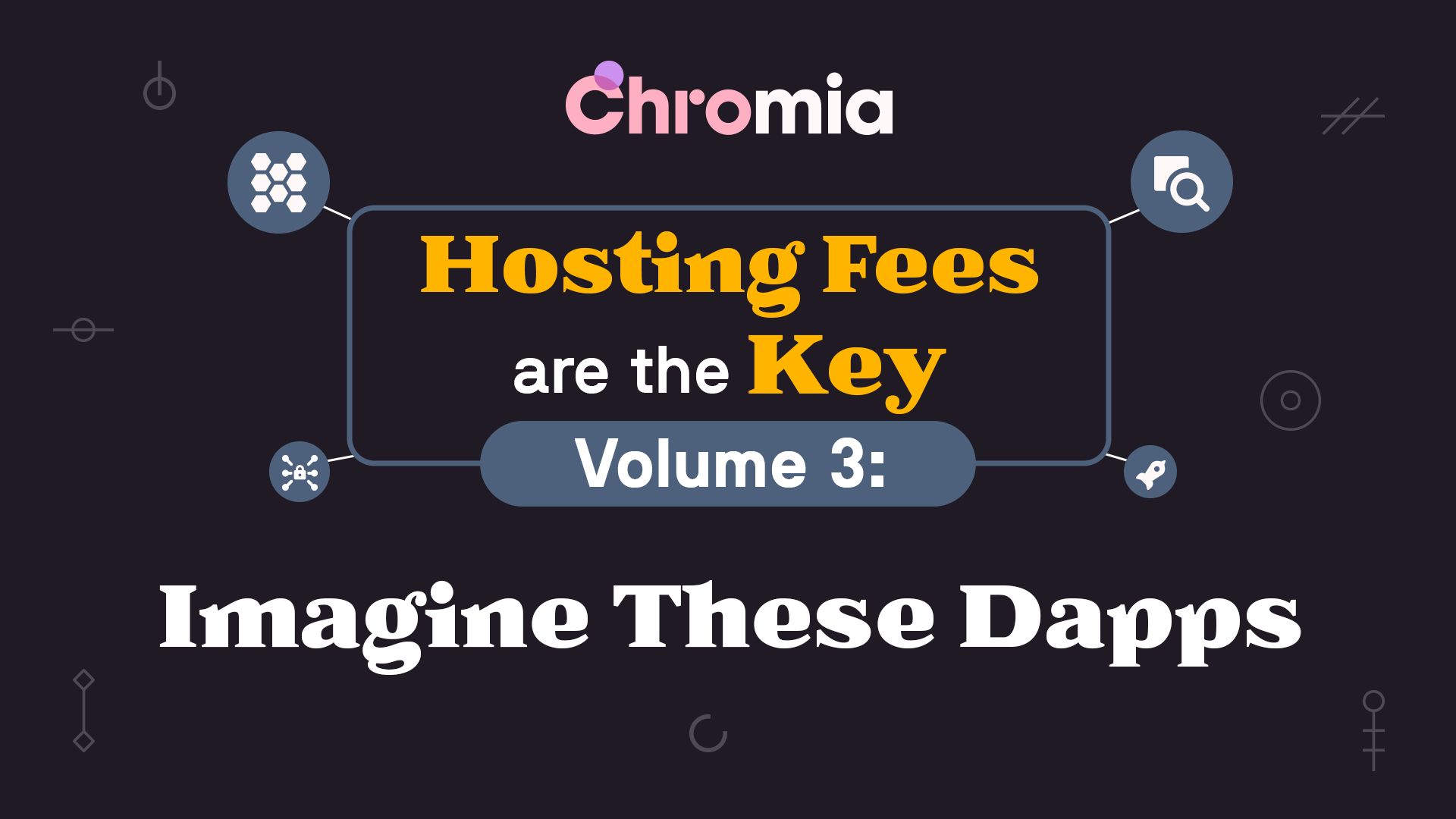This post is the third in a series of three articles discussing the advantages of Chromia’s hosting fee model. For additional information, refer to page 23 of the Chromia Whitepaper. See here for parts one and two.
In this article, we're going to delve into the realm of possibilities of Chromia by examining three potential dapps that could greatly benefit from the hosting fee model.
Potential Dapp #1: Social Media Platform
Current blockchains are not well suited to handle the large amount of data required by social media platforms. In addition, their transaction model would result in an inconvenient and expensive experience for the end user. Chromia's hosting fee model and relational blockchain architecture provide the tools to support a feature-rich and user -friendly social media dapp.
‘Free’ Transactions: The hosting fee model can allow basic actions to be completed without paying transaction costs. This lowers the barrier to entry and could allow anyone with a Chromia account to post, reply, and like posts.
Identity Verification: On current social media platforms, scammers often try to impersonate real people and businesses. On a blockchain-based platform, authentication is far more effective because no two accounts can share the same address.
Greater Data Security: There have been several notable examples of data breaches from social media sites. A blockchain-based platform inherits stronger encryption and account security, reducing these risks.
Streamlined Crypto Integration: Incorporating a platform reward token earned by posting, replying, or otherwise interacting is far easier when the platform is built directly on a blockchain..
Relational Blockchain: Social media platforms rely on relational databases for their power and efficiency when organizing, storing, and querying data. Chromia’s relational architecture makes it far better suited to support a social media dapp than traditional blockchains.
Potential Dapp #2: Coffee Chain Loyalty Program
Here's a unique twist on loyalty programs: Imagine a coffee chain loyalty program where points are collected on-chain in the form of an FT4 token. Customers pay using their usual method (cash, debit card, credit card, etc.), the employee scans their dapp QR code and the points are delivered. The same method can be used to spend points on in-store items, and it feels just like a traditional loyalty program. Meanwhile, these same customers have a world of Web3 possibilities waiting for them beneath the surface.
VIP Tiers: Customers can be given VIP status based on how many points they have collected.
Purchasing Limited Edition NFTs: Points can be used to purchase and/or upgrade NFT collectibles.
Trading NFTs and Points: Users could use an in-app marketplace, trading NFTs and points with each other.
Giveaways and Promotions: Points can be used to enter exclusive draws, giveaways, and other promotions. These events would be easier to organize and track from the business’ perspective, because the blockchain performs security and record-keeping functions by default.
Crypto Payments: On an optional basis, customers could set up crypto payments within the app and receive bonus loyalty points or other perks.
In this example, hosting fees paid by the business are a part of their operating expenses - they generate revenue from usual business activities, and offer the loyalty program to their customers as a value added service.
Potential Dapp #3: WETH/USDT Futures DEX
Assets can be bridged from EVM chains such as Ethereum and put into action on Chromia acting as a Layer-2. This enables a wide variety of dapps that can perform familiar functions with familiar assets, while offering a more convenient and dynamic feel than existing DEX products.
Centralized Feel: Because users don’t have to pay a fee each time they place or close an order, the user experience mimics that of a centralized exchange where users can perform actions with ease.
Non-Custodial: Unlike a centralized exchange, users retain custody of their assets.
Keypair Login: Since your wallet keypair acts as your ‘login’, there is no need to remember or secure your login information.
Trading fees pay for hosting: Since all trades generate platform revenue, there is a clear source of funding for hosting fees.
This example demonstrates how Chromia can address existing crypto use cases while offering an experience that has a noticeably fresher look and feel. While performing routine actions within a dapp, the end user experiences fewer interruptions and doesn’t need to constantly adjust gas prices every time they want to submit a transaction.
More to Explore
Chromia’s hosting fee model opens many possibilities. Perhaps reading these examples has even given you an idea of your own! We are looking forward to providing a platform that allows for maximum flexibility for users, developers, and entrepreneurs.
If you are a developer or entrepreneur who would like more information, we encourage you to reach out to us and visit our developer page.
About Chromia
Modern society runs on data and every online service you’re using is built upon underlying databases - ranging from your online bank to music streaming and gaming. Chromia is a relational blockchain - a combination of a relational database and a blockchain - making it easy to develop user-friendly decentralized apps for almost any industry, including DeFi, NFTs, gaming, and more.
Website | Twitter | Telegram | Facebook | Instagram | Youtube | Discord
